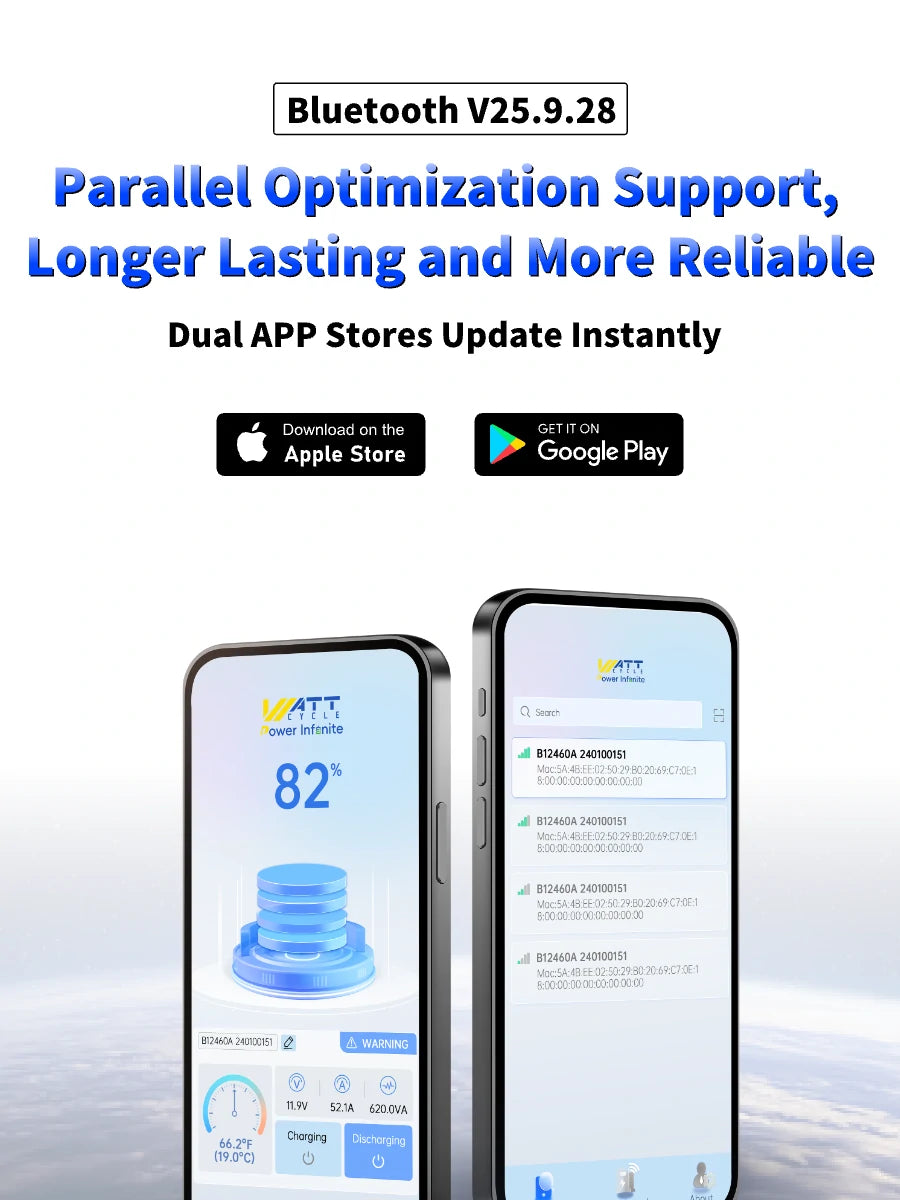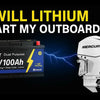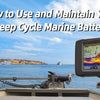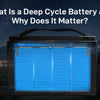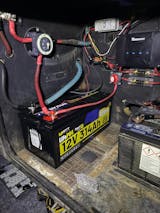How to Use and Maintain Your Deep Cycle Marine Battery?
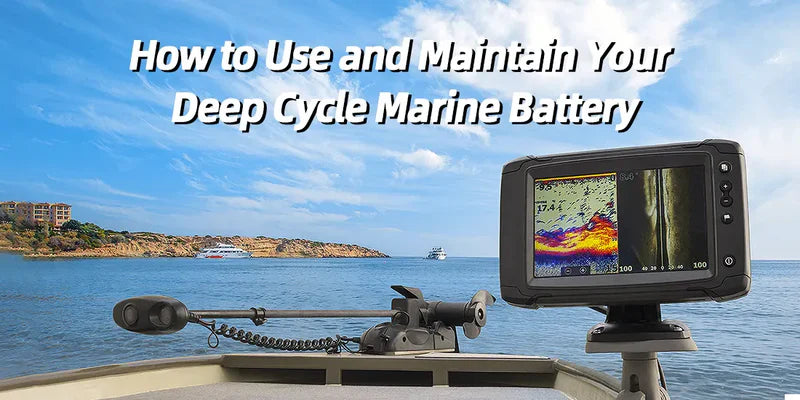
Taking proper care of your deep cycle marine battery is key to ensuring dependable performance and longevity—especially when exploring Canadian waters. Whether you’re out fishing in Lake Simcoe, cruising along the rugged coastlines of British Columbia, or venturing onto the Great Lakes, following these guidelines will help you get the most out of your marine deep cycle battery.
Choose the Right Capacity
Selecting the correct capacity for your marine battery is essential to meet the power needs of your onboard electronics. Here’s how to make the best choice:
- Calculate Your Power Requirements: Add up the energy consumption of devices such as marine radios, trolling motors, fish finders, and lights.
- Estimate Usage Duration: Consider how long each device will need to run without recharging.
- Plan for Extra Capacity: Opt for a battery that offers slightly more capacity than your calculated needs, accommodating any unexpected demands or minor inefficiencies.
For instance, a lithium deep cycle marine battery from WattCycle offers higher usable energy compared to traditional lead-acid batteries, ensuring reliable performance whether you’re using a marine cranking battery or a lithium marine starting battery.
Install Your Battery Securely
The challenges of the marine environment—constant motion, vibrations, and exposure to saltwater—make secure installation a must:
- Use a Battery Box or Tray: A protective battery box shields your battery from impacts, spills, and debris.
- Secure the Battery Firmly: Use straps or clamps to keep the battery steady, even when navigating choppy Canadian waters.
- Select a Safe Location: Install the battery in a dry, ventilated area, away from direct sunlight and extreme temperatures.
This careful installation helps ensure that your dual purpose lithium marine battery remains secure and functional in a variety of conditions, from inland lakes to coastal areas.
Use a Compatible Charger
Using the right charger is crucial to maintaining your battery’s health. Not all chargers are suited for lithium chemistries:
- Opt for a Lithium-Compatible Charger: Make sure your charger supports LiFePO4 chemistry and matches your battery’s voltage.
- Adhere to Charging Guidelines: Follow the recommended charging current—typically charging at 0.2C is ideal for WattCycle batteries. A range from 0.1C to 0.5C is acceptable, but sticking to the guidelines ensures longevity.
- Consider Solar Charging Options: If you’re using solar panels on your boat, pair them with an MPPT controller for optimal efficiency.
This approach not only benefits your deep cycle LiFePO4 battery but also protects marine cranking battery systems, ensuring safe and efficient charging regardless of whether you're in sheltered bays or open waters.
Perform Regular Inspections
Routine checks help identify potential issues before they become serious:
- Inspect Connections: Ensure that all battery terminals are tightly connected and free from corrosion, which can impair performance.
- Clean Terminals When Needed: If you notice any corrosion, clean the terminals using a solution of baking soda and water, then dry thoroughly.
- Examine for Physical Damage: Look for any signs of cracks, dents, or swelling that might indicate internal issues.
- Monitor Voltage Levels: Regularly use a multimeter to track the battery’s voltage—fluctuations might suggest a need for recharging or maintenance.
Regular maintenance not only helps extend the life of your marine deep cycle battery but also ensures that devices like your lithium marine cranking battery or marine starting battery operate at their best, whether you’re docked in a marina in Nova Scotia or out on a remote lake in Ontario.
Store Your Battery Properly
When the boating season winds down, proper storage is key to preserving your battery’s health:
- Fully Charge Before Storage: A fully charged battery is less likely to suffer from deep discharge during off-seasons.
- Store in a Cool, Dry Place: Ideal storage temperatures range between 10°C and 25°C (50°F to 77°F); avoid areas with extreme temperatures or moisture.
- Disconnect Connected Electronics: Remove any devices to prevent phantom drains.
- Periodic Checks: During storage, check the battery’s charge every few months and recharge if needed to maintain optimal voltage.
Proper storage practices ensure that your lithium deep cycle marine battery is ready for action when you return to your favourite Canadian fishing spots or boating adventures.
Avoid Deep Over-Discharges
Even though deep cycle batteries are designed to handle deep discharges, repeatedly draining your battery completely can reduce its overall cycle life:
- Use Monitoring Tools: A battery monitor can help you keep track of charge levels and prevent excessive discharges.
- Recharge Promptly: As soon as the battery drops below a safe level (typically around 20% capacity), recharge it to avoid long-term damage.
Follow Manufacturer Guidelines
Always refer to the manufacturer's instructions for charging, installation, and routine maintenance. WattCycle’s detailed guidelines, for example, are designed to help you get the most out of your lithium marine cranking battery and dual purpose lithium marine battery.
By integrating these practices into your routine, you’ll ensure that your 12V deep cycle marine battery remains a reliable power source for years to come. Whether it’s powering your marine radios or keeping your fish finders operational, proper care and maintenance help you enjoy worry-free time on Canada’s beautiful lakes and coastal waters.

